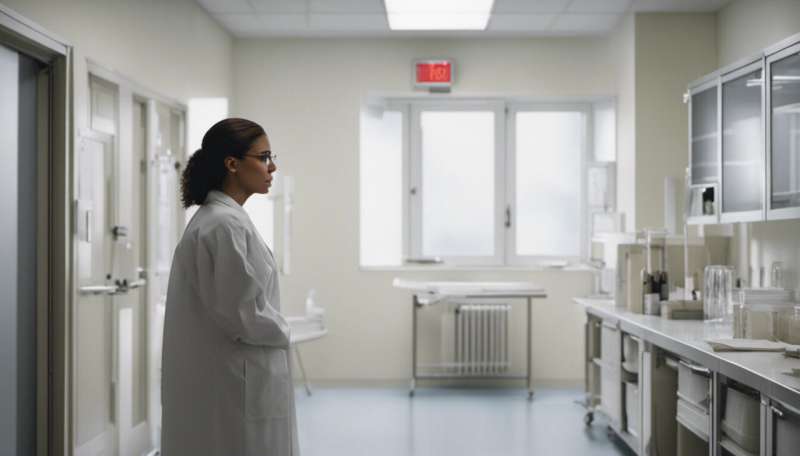Hospital gowns leave patients feeling open and vulnerable – their time is up

Most of us feel vulnerable when hospitalised, and being told to strip off and put on a pre-worn, revealing, backless gown does nothing to improve matters. Being escorted in this attire, often through public areas of a hospital, pretty much completes the humiliation.
What you wear affects how you feel about yourself. Studies suggest that clothing affects self-esteem, and getting dressed is a process of self-expression. What you wear informs others of your social standing, your ambitions, emotions, motivations and even your employment status.
So what role does clothing play when you find yourself in a vulnerable situation, such as in a hospital, awaiting medical treatment? If you are what you wear, what impact does wearing a backless hospital gown have on how you perceive yourself and how others perceive you?
Do we really need to bare all?
Arguably, there are advantages to hospital gowns. They are functional, allow doctors to gain easy access to the patient to conduct a physical examination. They are also cheap and easy to clean. But researchers in Finland have argued that wearing a hospital gown is often unnecessary and can even be traumatic for some patients. A recent study found that patients are often asked to wear hospital gowns even when there is no medical reason for them to do so.
Although research on this topic is scant, the limited findings so far suggest that the hospital gown is undignified and adds to a sense of disempowerment and vulnerability. And this is made worse by the professional, authoritarian, white coat worn by doctors, which can further increase the power imbalance.
The healthcare hierarchy often plays out in the power dynamic between the patient and medical staff. Despite efforts to empower patients with so-called patient-centered care, the institutionalised acceptance of the hospital gown persists.
It is important to challenge these sorts of cultural norms as dehumanising aspects of care can increase a patient's risk of further episodes of hospitalisation. Loss of control, loss of the power to make decisions and loss of autonomy may increase a patient's vulnerability to psychological distress which could have a negative effect on well-being and recovery. As such, patients need to be given a say in hospital clothing, with more humanising and dignified options explored, for example, limiting the use of hospital gowns to when they are needed for medical reasons, allowing patients to wear their own clothes when possible (especially when they are in public areas) and by redesigning gowns so they are less revealing and more dignified.
To better understand these issues we are engaged in a collaborative research project that aims to explore people's experience of wearing hospital gowns. By drawing on their experiences, we hope to better understand how hospital gowns affect their identity, well-being and recovery, with the aim of influencing change to policy and practice in hospitals.
Clothes serve more than function. Rather than having to bare all, let a little dignity, choice and humility be at the forefront of our thinking about hospital clothing.
This article is republished from The Conversation under a Creative Commons license. Read the original article.![]()
















